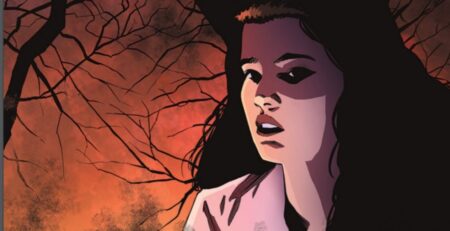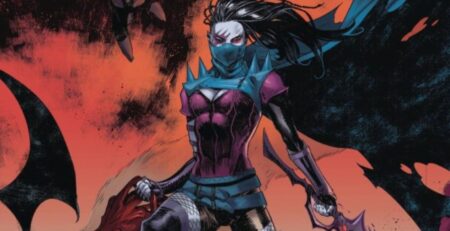
Bram Stoker’s Dracula is published by Legendary Comics is adapted by Robert Napton, illustrated by El Garing, art direction by Kerry Gammill, and lettered by Richard Starkings. What makes this graphic novel adaption so special is that it brings together the classic vampire tale Dracula with horror-icon Bela Lugosi. Having played Dracula in the 1931 film adaption, when you think of Dracula, Bela Lugosi is not far behind in your thoughts. There is a forward written by Lynn Lugosi Sparks (grandaughter of Bela Lugosi) describing Lugosi’s early life, his rise fo film stardom, and the effect Dracula had on his career.
Napton condenses Stoker’s epistolary novel into a very neat and cohesive script that ties the story of Dracula together. Within the span of six chapters, about 200 pages, everything from Jonathan Harker’s account of interacting with vampires to Mina’s letters is present. I have personally read Dracula twice and upon reading this adaption, I was thoroughly pleased that every vital moment is accounted for. The heart of the story is rendered onto these pages and readers can tell that a lot of love was poured into it. The script is fast-paced compared to the slow burn of the original novel. However, that is viewed as a positive considering that there is a big lull once Dracula attacks Lucy in the last third of the story. I never really truly liked the last half of Dracula because the novel loses it’s pacing. While the graphic novel still has that sense of losing momentum, it is not as apparent and still kept me invested in the narrative.
The adapted script would not be as effective if it wasn’t for Starkings lettering. Given the multiple internal thoughts from characters, different types of letters being written, and dialogue coming from Napton’s script, Bram Stroker’s Dracula graphic novel adaption could have quickly been a very difficult read. Starkings exerts expertise by having character narration italicized and not contained within speech bubbles. The person narrating at any moment has their own grey-filled box to indicate whose thoughts we are following. Internal character thoughts are placed in rectangular text boxes. Character exchanges are in standard dialogue bubbles. Given that the art style is black and white noir, the text lays against grey backgrounds and nothing gets lost or muddled.
The shining aspect of Bram Stoker’s Dracula is El Garing’s artwork. Every page features stark grey shading and lighting. The heavy inking and detailed landscapes easily make this book feel as if this could have been released in the 30s but still has a hint of modern aesthetics that makes it stick out. Mina and Lucy’s character designs are idealized with soft faces, the classic femme fatale hourglass figures, long beautiful hair, and luscious lips. It is through the female characters that Dracula’s themes of sexuality and sexual repression are explored. Although, the script doesn’t place as much emphasis on this aspect and chooses to showcase more of the monstrous terror that Dracula is inflicting on Jonathan and his friends. Bela Lugosi as Dracula through this adaptation is an utter delight. Feeling nostalgic, it captures that sense of witnessing the classic monster tale of vampires in the night for the first time all over again. There is so much attention to detail in his face and costume that it truly feels as if Lugosi never left us and continues to shine with the theatrics of the Count.
This graphic novel adaption of Bram Stoker’s Dracula is a great way to introduce new readers to the gothic horror genre. The interior art shines a light on how beautiful noir compliments horror. Reading this adaptation feels like a breath of fresh horror air as it sticks out from the modern realm of horror comics. In the end, there is an afterward written by Dacre Stoker (great-grand-nephew of Bram Stoker) on what inspired the creation of the novel and how Stoker wrote it. Hitting all the relevant points of the original novel and the inclusion of the iconic Bela Lugosi, Legendary Comics brings a book that not only honors the horror legacy of Lugosi but celebrates the importance of Dracula. Be sure to pick Bram Stoker’s Dracula on November 3rd, 2020 from Legendary Comics here.
Bram Stoker's Dracula
Tl;DR
This graphic novel adaption of Bram Stoker’s Dracula is a great way to introduce new readers to the gothic horror genre. The interior art shines a light on how beautiful noir compliments horror. Reading this adaptation feels like a breath of fresh horror air as it sticks out from the modern realm of horror comics. In the end, there is an afterward written by Dacre Stoker (great-grand-nephew of Bram Stoker) on what inspired the creation of the novel and how Stoker wrote it. Hitting all the relevant points of the original novel and the inclusion of the iconic Bela Lugosi, Legendary Comics brings a book that not only honors the horror legacy of Lugosi but celebrates the importance of Dracula. Be sure to pick Bram Stoker’s Dracula on November 3rd, 2020 from Legendary Comics here.







